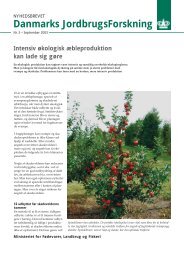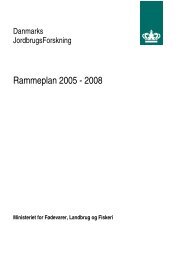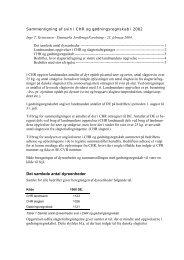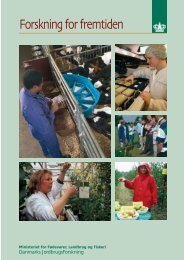Reproduction performances and conditions of group-housed non ...
Reproduction performances and conditions of group-housed non ...
Reproduction performances and conditions of group-housed non ...
You also want an ePaper? Increase the reach of your titles
YUMPU automatically turns print PDFs into web optimized ePapers that Google loves.
Table 3. Effect <strong>of</strong> energy intake in mid- <strong>and</strong> late pregnancy <strong>and</strong> in several successive pregnancies upon number <strong>of</strong> embryos <strong>and</strong> pregnancy rate (continued)<br />
Refe-<br />
rence<br />
5 H: 34.6<br />
Level in treatments, MJ ME day -1 N Daily gain, g Number <strong>of</strong> embryos Pregnancy rate Treatment period<br />
M: 28.1<br />
L: 21.4<br />
61<br />
63<br />
63<br />
- 11.2 4)<br />
10.8<br />
11.6<br />
More culled sows in L (main reasons: not<br />
pregnant <strong>and</strong> aborted)<br />
1 day a.w.-109 days a.ma.<br />
Four successive gestations<br />
6 H: 38.5<br />
48<br />
58-65a<br />
13.6<br />
- Two successive gestations<br />
L: 22.2<br />
48<br />
21-25b<br />
12.3<br />
(Pregnancy)<br />
(First parity)<br />
Note: In some references the level <strong>of</strong> energy is only reported as DE, in those cases ME is calculated as 0.96*DE (Theil et al. (2002))<br />
Ma.: Mating, F: Farrowing, W: Weaning, La: Lactation, A: After<br />
a, b, c: Values with different superscripts are significant different (P≤0.05). x,y, z: Values with different superscripts tended to be different (P
















